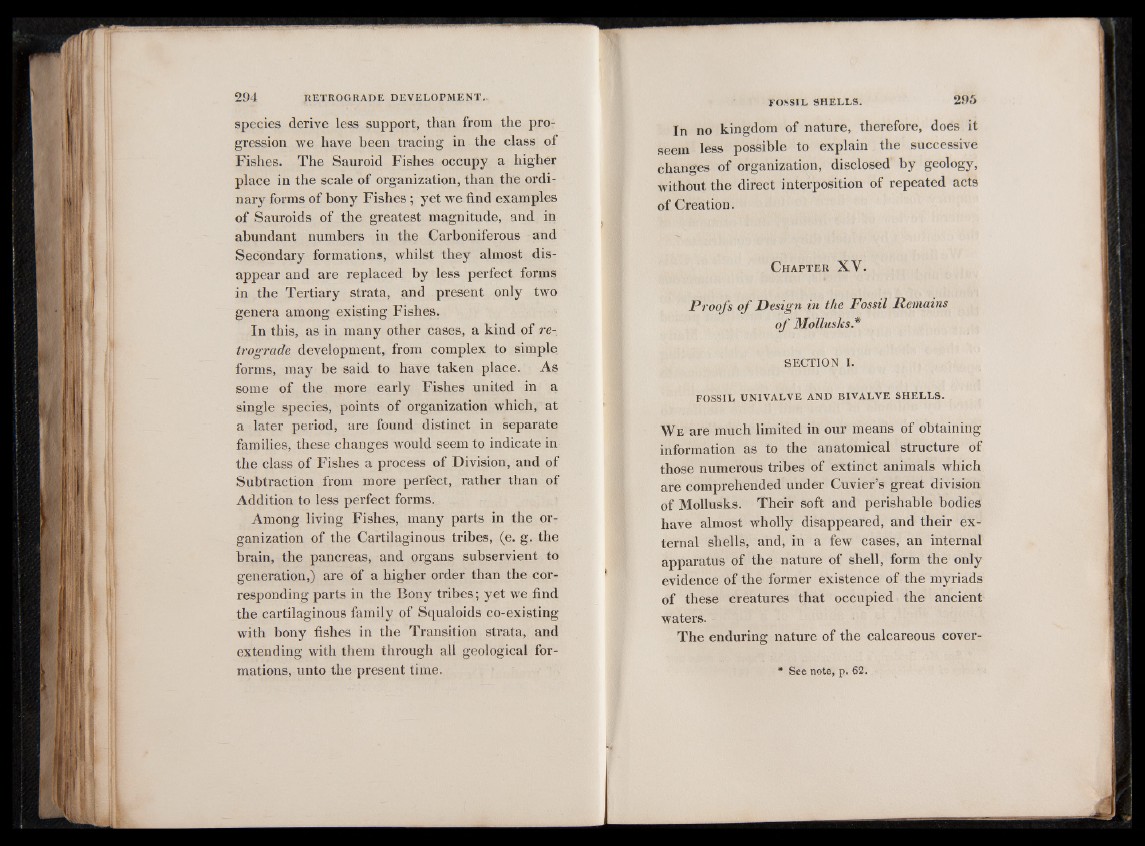
species derive less support, than from the progression
we have been tracing in the class of
Fishes. The Sauroid Fishes occupy a higher
place in the scale of organization, than the ordinary
forms of bony Fishes ; yet we find examples
of Sauroids of the greatest magnitude, and in
abundant numbers in the Carboniferous and
Secondary formations, whilst they almost disappear
and are replaced by less perfect forms
in the Tertiary strata, and present only two
genera among existing Fishes.
In this, as in many other cases, a kind of retrograde
development, from complex to simple
forms, may be said to have taken place. As
some of the more early Fishes united in a
single species, points of organization which, at
a later period, are found distinct in separate
families, these changes would seem to indicate in
the class of Fishes a process of Division, and of
Subtraction from more perfect, rather than of
Addition to less perfect forms.
Among living Fishes, many parts in the organization
of the Cartilaginous tribes, (e. g. the
brain, the pancreas, and organs subservient to
generation,) are of a higher order than the corresponding
parts in the Bony tribes ; yet we find
the cartilaginous family of Squaloids co-existing
with bony fishes in the Transition strata, and
extending with them through all geological formations,
unto the present time.
In no kingdom of nature, therefore, does it
seem less possible to explain the successive
changes of organization, disclosed by geology,
without the direct interposition of repeated acts
of Creation.
Chapter XV.
Proofs o f Design in the Fossil Remains
o f Mollusks*
SECTION L
FOSSIL UNIVALVE AND BIVALVE SHELLS.
W e are much limited in our means of obtaining
information as to the anatomical structure of
those numerous tribes of extinct animals which
are comprehended under Cuvier’s great division
of Mollusks. Their soft and perishable bodies
have almost wholly disappeared, and their external
shells, and, in a few cases, an internal
apparatus of the nature of shell, form the only
evidence of the former existence of the myriads
of these creatures that occupied the ancient
waters.
The enduring nature of the calcareous cover